| Lakshmibai | |
|---|---|
| Rani of Jhansi | |
 A miniature portrait of Rani Lakshmibai | |
| Predecessor | Gangadhar Rao |
| Successor | British Raj |
| Born |
Manikarnika Tambe 19 November 1828 Varanasi |
| Died |
18 June 1858 (aged 29) Kotah ki Serai, near Gwalior, India |
| Spouse | Jhansi Naresh Maharaj Gangadhar Rao Newalkar |
| Issue | Damodar Rao, Anand Rao (adopted) |
| House | Newalkar |
| Father | Moropant Tambe |
| Mother | Bhagirathi Sapre |
Lakshmibai, the Rani of Jhansi (![]() pronunciation (help·info); 19 November 1828 – 18 June 1858), was the queen of the princely state of Jhansi in North India currently present in Jhansi district in Uttar Pradesh, India. She was one of the leading figures of the Indian Rebellion of 1857 and became a symbol of resistance to the British Raj for Indian nationalists.
pronunciation (help·info); 19 November 1828 – 18 June 1858), was the queen of the princely state of Jhansi in North India currently present in Jhansi district in Uttar Pradesh, India. She was one of the leading figures of the Indian Rebellion of 1857 and became a symbol of resistance to the British Raj for Indian nationalists.
Contents
Early life
Rani Lakshmibai was born on 19 November 1828 in the holy town of Varanasi into a Marathi Brahmin family. She was named Manikarnika and was nicknamed Manu. Her father was Moropant Tambe and her mother Bhagirathi Sapre (Bhagirathi Bai). Her parents came from Maharashtra and was cousin of Nana Sahib. Her mother died when she was four years old. Her father worked for a court Peshwa of Bithoor district who brought up Manikarnika like his own daughter. The Peshwa called her "Chhabili", which means "playful". She was educated at home and was more independent in her childhood than others of her age; her studies included shooting, horsemanship, fencing and mallakhamba with her childhood friends Nana Sahib and Tatya Tope.
Annexation of Jhansi
Manikarnika was married to the Maharaja of Jhansi, Raja Gangadhar Rao Newalkar, in May 1842 and was afterwards called Lakshmibai (or Laxmibai) in honour of the Hindu goddess Lakshmi. She gave birth to a boy, later named Damodar Rao, in 1851, who died after four months. The Maharaja adopted a child called Anand Rao, the son of Gangadhar Rao's cousin, who was renamed Damodar Rao, on the day before the Maharaja died. The adoption was in the presence of the British political officer who was given a letter from the Maharaja instructing that the child be treated with respect and that the government of Jhansi should be given to his widow for her lifetime. After the death of the Maharaja in November 1853, because Damodar Rao (born Anand Rao) was adopted, the British East India Company, under Governor-General Lord Dalhousie, applied the Doctrine of Lapse, rejecting Damodar Rao's claim to the throne and annexing the state to its territories. When she was informed of this she cried out "I shall not surrender my Jhansi" (Mein meri Jhansi nahi doongi). In March 1854, Lakshmibai was given an annual pension of Rs. 60,000 and ordered to leave the palace and the fort. Rani Lakshmibai has been known to the British most commonly as "the Rani of Jhansi"; in Hindi she is often known as "Jhansi ki Rani".
Rani Lakshmibai was accustomed to riding on horseback accompanied by a small escort between the palace and the temple although sometimes she was carried by palanquin. Her horses included Sarangi, Pavan and Badal; according to tradition she rode Badal when escaping from the fort in 1858. The Rani Mahal, the palace of Rani Lakshmibai, has now been converted into a museum. It houses a collection of archaeological remains of the period between the 9th and 12th centuries AD.
Indian Rebellion of 1857
Beginning of the Rebellion
On 10 May 1857 the Indian Rebellion started in Meerut. When news of the fighting reached Jhansi, the Rani asked the British political officer, Captain Alexander Skene, for permission to raise a body of armed men for her own protection; Skene agreed to this. The city was relatively calm in the midst of the regional unrest, but the Rani conducted a Haldi Kumkum ceremony with pomp in front of all the women of Jhansi to provide assurance to her subjects, in the summer of 1857 and to convince them that the British were cowards and not to be afraid of them.
Until this point, Lakshmibai was reluctant to rebel against the British. In June 1857, rebels of the 12th Bengal Native Infantry seized the fort containing the treasure and magazine, and after persuading the British to lay down their arms by promising them no harm, broke their word and massacred 40 to 60 European officers of the garrison along with their wives and children. The Rani's involvement in this massacre is still a subject of debate. An army doctor, Thomas Lowe, wrote after the rebellion characterising her as the "Jezebel of India ... the young rani upon whose head rested the blood of the slain".
Four days after the massacre the sepoys left Jhansi, having obtained a large sum of money from the Rani, and having threatened to blow up the palace where she lived. Following this, as the only source of authority in the city the Rani felt obliged to assume the administration and wrote to Major Erskine, commissioner of the Saugor division explaining the events which had led her to do so. On 2 July Erskine wrote in reply that he requested her to "manage the District for the British Government" until the arrival of a British Superintendent. The Rani's forces defeated an attempt by the mutineers to assert the claim to the throne of a rival prince who was captured and imprisoned. There was then an invasion of Jhansi by the forces of Company allies Orchha and Datia; their intention however was to divide Jhansi between themselves. The Rani appealed to the British for aid but it was now believed by the governor-general that she was responsible for the massacre and no reply was received. She set up a foundry to cast cannon to be used on the walls of the fort and assembled forces including some from former feudatories of Jhansi and elements of the mutineers which were able to defeat the invaders in August 1857. Her intention at this time was still to hold Jhansi on behalf of the British.[29]
Siege of Jhansi
From August 1857 to January 1858 Jhansi under the Rani's rule was at peace. The British had announced that troops would be sent there to maintain control but the fact that none arrived strengthened the position of a party of her advisers who wanted independence from British rule. When the British forces finally arrived in March they found it well-defended and the fort had heavy guns which could fire over the town and nearby countryside. Sir Hugh Rose, commanding the British forces, demanded the surrender of the city; if this was refused it would be destroyed.[30] After due deliberation the Rani issued a proclamation: "We fight for independence. In the words of Lord Krishna, we will if we are victorious, enjoy the fruits of victory, if defeated and killed on the field of battle, we shall surely earn eternal glory and salvation."[31] She defended Jhansi against British troops when Sir Hugh Rose besieged Jhansi on 23 March 1858.
The bombardment began on 24 March but was met by heavy return fire and the damaged defences were repaired. The defenders sent appeals for help to Tantia Tope;[28] an army of more than 20,000, headed by Tantia Tope, was sent to relieve Jhansi but they failed to do so when they fought the British on 31 March. During the battle with Tantia Tope's forces part of the British forces continued the siege and by 2 April it was decided to launch an assault by a breach in the walls. Four columns assaulted the defences at different points and those attempting to scale the walls came under heavy fire. Two other columns had already entered the city and were approaching the palace together. Determined resistance was encountered in every street and in every room of the palace. Street fighting continued into the following day and no quarter was given, even to women and children. "No maudlin clemency was to mark the fall of the city" wrote Thomas Lowe.[32] The Rani withdrew from the palace to the fort and after taking counsel decided that since resistance in the city was useless she must leave and join either Tantia Tope or Rao Sahib (Nana Sahib's nephew).[33]
According to tradition with Damodar Rao on her back she jumped on her horse Badal from the fort; they survived but the horse died.[35] The Rani escaped in the night with her son, surrounded by guards.[36] The escort included the warriors Khuda Bakhsh Basharat Ali (commandant), Gulam Gaus Khan, Dost Khan, Lala Bhau Bakshi, Moti Bai, Sunder-Mundar, Kashi Bai, Deewan Raghunath Singh and Deewan Jawahar Singh.[citation needed] She decamped to Kalpi with a few guards, where she joined additional rebel forces, including Tantia Tope.[33] They occupied the town of Kalpi and prepared to defend it. On 22 May British forces attacked Kalpi; the Indian forces were commanded by the Rani herself and were again defeated.
Flight to Gwalior
The leaders (the Rani of Jhansi, Tantia Tope, the Nawab of Banda, and Rao Sahib) fled once more. They came to Gwalior and joined the Indian forces who now held the city (Maharaja Scindia having fled to Agra from the battlefield at Morar). They moved on to Gwalior intending to occupy the strategic Gwalior Fort and the rebel forces occupied the city without opposition. The rebels proclaimed Nana Sahib as Peshwa of a revived Maratha dominion with Rao Sahib as his governor (subedar) in Gwalior. The Rani was unsuccessful in trying to persuade the other rebel leaders to prepare to defend Gwalior against a British attack which she expected would come soon. General Rose's forces took Morar on 16 June and then made a successful attack on the city.[37]
Death
On 17 June in Kotah-ki-Serai near the Phool Bagh of Gwalior, a squadron of the 8th (King's Royal Irish) Hussars, under Captain Heneage, fought the large Indian force commanded by Rani Lakshmibai which was trying to leave the area. The 8th Hussars charged into the Indian force, slaughtering 5,000 Indian soldiers, including any Indian "over the age of 16".[38] They took two guns and continued the charge right through the Phool Bagh encampment. In this engagement, according to an eyewitness account, Rani Lakshmibai put on a sawar's uniform and attacked one of the hussars; she was unhorsed and also wounded, probably by his sabre. Shortly afterwards, as she sat bleeding by the roadside, she recognised the soldier and fired at him with a pistol, whereupon he "dispatched the young lady with his carbine".[39][40] According to another tradition Rani Lakshmibai, the Queen of Jhansi, dressed as a cavalry leader, was badly wounded; not wishing the British to capture her body, she told a hermit to burn it. After her death a few local people cremated her body.
The British captured the city of Gwalior after three days. In the British report of this battle, Hugh Rose commented that Rani Lakshmibai is "personable, clever and beautiful" and she is "the most dangerous of all Indian leaders".[41][42] Rose reported that she had been buried "with great ceremony under a tamarind tree under the Rock of Gwalior, where I saw her bones and ashes".[43]
Watch movie Jhansi Ki Rani online on Amazon
Watch movie Jhansi Ki Rani online
Watch The Movie On PrimeAadmi Khilona Hai Full HD Movie Download

Yeh Gulistan Hamara Full HD Movie Download

Jeene Ki Arzoo Full HD Movie Download

Bhediyon Ke Samooh Full HD Movie Download

Intezar Full HD Movie Download

Aandhi (1975) Full HD Movie Download
.jpg)
Amar Deep Full HD Movie Download

Maun Full HD Movie Download
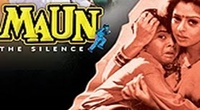
Shavukaru Full HD Movie Download
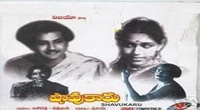
Final Destination 3 Full HD Movie Download

Edutha Sabatham Mudipen Full HD Movie Download

Coyamuthur Maaplaey Full HD Movie Download

Allari Priyudu Full HD Movie Download
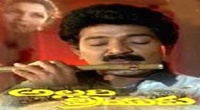
Veta Full HD Movie Download

Manavaraali Pelli Full HD Movie Download
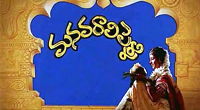
Tarzan Sundari Full HD Movie Download
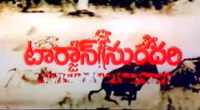
Veedevadandi Babu Full HD Movie Download

Ontari Poratam Full HD Movie Download

Nice Guy Full HD Movie Download
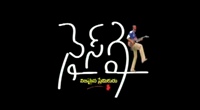
Andha Bichar (Bengali) Full HD Movie Download
.jpg)
Vijay Full HD Movie Download

Download latest Movie from bollywood
- 1> baaghi 3
- 2> THE SKY IS PINK MOVIE FULL STORY AND REVIEW
- 3> Luka Chuppi
- 4> TO ALL THE BOYS I’VE LOVED BEFORE
- 5> Kabir Singh
- 6> Street Dancer 3D
- 7> Simmba
- 8> Gone Girl
- 9> The Girl Who Lived
- 10> Ludo
- 11> DILWALE DULHANIA LE JAYENGE
- 12> GUILTY
- 13> The Godfather
- 14> Adventures of Rusty
- 15> Sooryavanshi
- 16> Satyameva Jayate 2
- 17> Thappad
- 18> Bhool Bhulaiyaa 2
- 19> KGFChapter 2
- 20> Mardaani 2
- 21> Pinjar
- 22> Shivaji maharaj
- 23> Ek Villian 2
- 24> Hungama 2
- 25> Divergent
- 26> Mumbai Saga
- 27> The Internship
- 28> HIT (telugu)
- 29> Panga
- 30> The perfect date
- 31> 16 December
- 32> Gopala Gopala (Telugu)
- 33> Brahmastra
- 34> Gangubai Kathiawadi
- 35> Manmadhudu
- 36> Nenu local
- 37> Mahanati
- 38> Shatamanam bavathi
- 39> Lagaan
- 40> After
- 41> MOM
- 42> Shamshera
- 43> Raguvaran BTech
- 44> Khakee
- 45> The villain
- 46> OM
- 47> Mr. perfect
- 48> Bueatifull mind
- 49> Hichki
- 50> Gabbar Singh
- 51> Jogi
- 52> Before Sunrise
- 53> Before Sunset
- 54> Before Midnight
- 55> The Big Bull
- 56> Top Gun: Maverick
- 57> The Purge
- 58> The Sky is Pink
- 59> Laxmmi Bomb
- 60> Sadak 2
- 61> Sufna
- 62> Prithviraj
- 63> PK
- 64> Coolie No 1(2020)
- 65> Black Widow
- 66> Dear Zindagi
- 67> Dil Bechara
- 68> PHIR HERA PHERI
- 69> WAR
- 70> Dostana
- 71> RRR: Roudram Ranam Rudhiram
- 72> Maidan
- 73> Dabbang 3
- 74> Chhalaang
- 75> life as we know it
- 76> SherShaah
- 77> Sandeep Aur Pinky Faraar
- 78> Event Horizon
- 79> 83
- 80> Radhe: Your Most Wanted Bhai
- 81> Gunjan Saxena: The Kargil Girl
- 82> Mr India
- 83> Vivah
- 84> Anokha Bandhan
- 85> Ghost
- 86> Bhoot: Part One - The Haunted Ship
- 87> Haseen Dilruba
- 88> Laal Singh Chaddha
- 89> Qismat
- 90> Rajput
- 91> Drive
- 92> Dil Chahta Hai
- 93> Dil Ki Baazi
- 94> Dil Ka Rishta
- 95> Teesri Manzil
- 96> Dil
- 97> Love Aaj Kal
- 98> Khaali Peeli
- 99> Bunty Aur Babli 2
- 100> Atrangi Re
- 101> Gulabo Sitabo
- 102> Jodi
- 103> Suraj Pe Mangal Bhari
- 104> Deewana
- 105> Attack
- 106> Sardar Udham Singh
- 107> Toofan
- 108> THE LOVEBIRDS
- 109> Jersey
- 110> Ginny Weds Sunny
- 111> Thalaivi
- 112> Shiddat
- 113> Angels vs Zombies
- 114> Koi Mil Gya
- 115> Thank God
- 116> Bhuj: The Pride of India
- 117> Hum Aapke Hain Kaun
- 118> The Platform
- 119> Bird Box
- 120> Roohi Afzana
- 121> Torbaaz
- 122> Nikamma
- 123> World War Z
- 124> Extraction
- 125> Train to Busan
- 126> Life of Pi
- 127> SHAADI MEIN JROOR AANA
- 128> Himmat Aur Mehnat
- 129> To All The Boys: P.S. I Still Love You
- 130> Mimi
- 131> Good Newwz
- 132> Shubh Mangal Zyada Saavdhan
- 133> Raabta
- 134> Harry Potter and the Philosopher's Stone
- 135> Harry Potter and the Chamber of Secrets
- 136> Chhapaak
- 137> War of the Worlds
- 138> Harry Potter and the Prisoner of Azkaban
- 139> Harry Potter and the Goblet of Fire
- 140> MURDER MYSTERY
- 141> Shakuntala Devi
- 142> Bachchan Pandey
- 143> Jayeshbhai Jordar
- 144> Sheer Qorma
- 145> Saina
- 146> 'O' Pushpa I hate tears
- 147> Kedarnath
- 148> MS Dhoni The Untold Story
- 149> Chhichhore
- 150> Badhaai Ho
- 151> Unstoppable
- 152> Oz the Great And Powerful
- 153> The Girl on the Train
- 154> Haathi Mere Saathi 2020
- 155> The Conjuring: The Devil Made Me Do It
- 156> Gandhi Se Pehle Gandhi
- 157> The Song of Scorpions
- 158> Srimanthudu
- 159> Hello Guru Prema Kosame
- 160> Beauty and The Beast
- 161> Black Panther
- 162> Charlie and the Chocolate Factory
- 163> Bole Chudiyan
- 164> Fidaa
- 165> Duvvada Jagannadham
- 166> Bruce Lee: The Fighter
- 167> Hyper
- 168> Yaara
- 169> Red (2020)
- 170> Shivam
- 171> That Is Mahalakshmi
- 172> Nishabdham
- 173> Aashram 2020 web series
- 174> Laxmii
- 175> Mismatched
- 176> STUDENT OF THE YEAR 2
- 177> NAIL POLISH
- 178> Ramprasad Ki Tehrvi
- 179> KAAGAZ
- 180> 12 o Clock
- 181> The Power
- 182> bolo hau
- 183> Tribhanga
- 184> JAMUN
- 185> Madam Chief Minister
- 186> Maasaab
- 187> Aadhaar
- 188> Tanhaji
- 189> Bhaagi 3
- 190> Bhootnath
- 191> MALANG
- 192> Jai Mummy Di
- 193> Haathi Mere Saathi 2021
- 194> Shakeela
- 195> Unpaused
- 196> Annayya
- 197> Vamsoddharakudu
- 198> Mrugaraju
- 199> Narasimha Naidu
- 200> Sankranti
- 201> Manasu Maata Vinadhu
- 202> Anjaane
- 203> Apaharan
- 204> Bachke Rehna Re Baba
- 205> Bewafaa
- 206> Roohi
- 207> Radhe
- 208> Zindagi Khoobsoorat Hai
- 209> Yeh Mohabbat Hai
- 210> Yeh Kya Ho Raha Hai?
- 211> The Tomorrow War
- 212> DehradunDiary
- 213> Meri Shaadi Karaoo
- 214> Matruu Ki Bijlee Ka Mandola
- 215> No One Killed Jesica
- 216> Aag Ka Goola
- 217> Eight Million Dollars
- 218> Three Hundred
- 219> Cats and Dog
- 220> Decoy
- 221> Gold Rush
- 222> You Have Got Mail
- 223> Final Destination three
- 224> Tofan
- 225> Jungle
Request for Download movie Jhansi Ki Rani
- Bollywood movies
- Latest Bollywood movies
- Download all bengali movies
- Download all bhojpuri movies
- Download all english movies
- Download all gujarati movies
- Download all hindi movies
- Download all kannada movies
- Download all malayalam movies
- Download all marathi movies
- Download all oriya movies
- Download all punjabi movies
- Download all tamil movies
- Download all telugu movies
- Bollywood action movies
- Bollywood adventure movies
- Bollywood animation movies
- Bollywood classical movies
- Bollywood comedy movies
- Bollywood crime movies
- Bollywood devotional movies
- Bollywood documentary movies
- Bollywood drama movies
- Bollywood family movies
- Bollywood fantasy movies
- Bollywood historical movies
- Bollywood history movies
- Bollywood horror movies
- Bollywood musical movies
- Bollywood mystery movies
- Bollywood mythological movies
- Bollywood patriotic movies
- Bollywood romance movies
- Bollywood romantic movies
- Bollywood sci-fi movies
- Bollywood social movies
- Bollywood spiritual movies
- Bollywood sports movies
- Bollywood suspense movies
- Bollywood thriller movies
- Bollywood war movies
- Hot actress list
- Hot gujarati actress list
- Hot tamil actress list
- Hot bhojpuri actress list
- Hot assam actress list
- Hot bihari actress list
- Hot jammu and kashmir actress list
- Hot gujarati actress list
- Hot haryana actress list
- Hot konkani actress list
- Hot marathi actress list
- Hot odia actress list
- Hot punjabi actress list
- Hot rajasthani actress list
- Hot kannada actress list
- Hot malayalam actress list
- Hot telugu actress list
- Hot tulu actress list
- Hot Actress list from Indian city
- Hot actress list from ahmedabad
- Hot actress list from alappuzha
- Hot actress list from bangalore
- Hot actress list from bangalore
- Hot actress list from bhopal
- Hot actress list from chandigarh
- Hot actress list from chennai
- Hot actress list from guwahati
- Hot actress list from hyderabad, india
- Hot actress list from indore
- Hot actress list from jaipur
- Hot actress list from kannur
- Hot actress list from kochi
- Hot actress list from kolkata
- Hot actress list from kollam
- Hot actress list from kottayam
- Hot actress list from kozhikode
- Hot actress list from lucknow
- Hot actress list from madurai
- Hot actress list from mangalore
- Hot actress list from mumbai
- Hot actress list from mysore
- Hot actress list from new delhi
- Hot actress list from patna
- Hot actress list from pune
- Hot actress list from thiruvananthapuram
- Hot actress list from thrissur
- Hot actress list from tiruchirappalli
- Hot actress list from vijayawada
- Hot actress list from visakhapatnam
- All Bollywood Movies
- Bollywood Celeb
- >Art Director
- >Audiography
- >Background Music
- >Banner
- >Choreographer
- >Cinematographer
- >Costume Designer
- >Dialogue Writer
- >Director
- >Distributor
- >Editor
- >Executive Producer
- >Hair Stylist
- >Lyricist
- >Music Director
- >Photographer
- >Playback Singers
- >Presenter
- >Producer
- >Production Company
- >Production Designer
- >Screenplay
- >Singer
- >Sound
- >Actor
- >Story Writer
- >Studio
- >Video Director
- >Miscellaneous
- >Publicity (pro)
- >Web Creator
- >Production Labs
- >Publicity Design
- >Publicity Stills
- >Writer
- >Miscellaneous Artists
- >Visual Effects
- >Reporter
- >Music Company
- >Shooting Studios
- >Picturised On
- >Line Producer
- >Co Producer
- >Asst Director
- >Casting Director
- >Cinematography
- >Choreography
- >Dialouge
- >Editing
- >Lyrics
- >Music
- >Story
- >Playback Singer Female
- >Playback Singer Male
- >Actor In A Comic Role (male/female)
- >Child Artiste
- >Ensemble Cast
- >Actor Popular Choice (male)
- >Actor Popular Choice (female)
- >Sa Re Ga Ma Pa Song Of The Year
- >Actor In Supporting Role
- >Actress In Supporting Role
- >Actor In Leading Role
- >Art Direction
- >Actress In Leading Role
- >Sound Recording
- >Costume Design
- >Special Effects
- >Action
- >Actor In A Negative Role
- >Lifetime Achievement Award
- >Cinematic Exellence (director)
- >Cinematic Exellence (male)
- >Cinematic Exellence (female)
- >International Male Icon
- >International Female Icon
- >Actor In A Supporting Role (male)
- >Actor In A Supporting Role (female)
- >Actor In A Comic Role
- >Playback Singer (male)
- >Playback Singer (female)
- >Most Promising Debut (female)
- >Most Promising Debut (male)
- >Most Promising Director
- >Sound Design
- >Lifetime Jodi
- >Marketed Film
- >Jury Award For Best Actor
- >Jury Award For Best Actress
- >Jury Award For Best Film
- >Jury Award For Best Director
- >Playback Singer(male)
- >Lifetime Acheivement Award (male)
- >Excellence Award
- >Jodi Award
- >Performer Of The Year
- >Presented By
